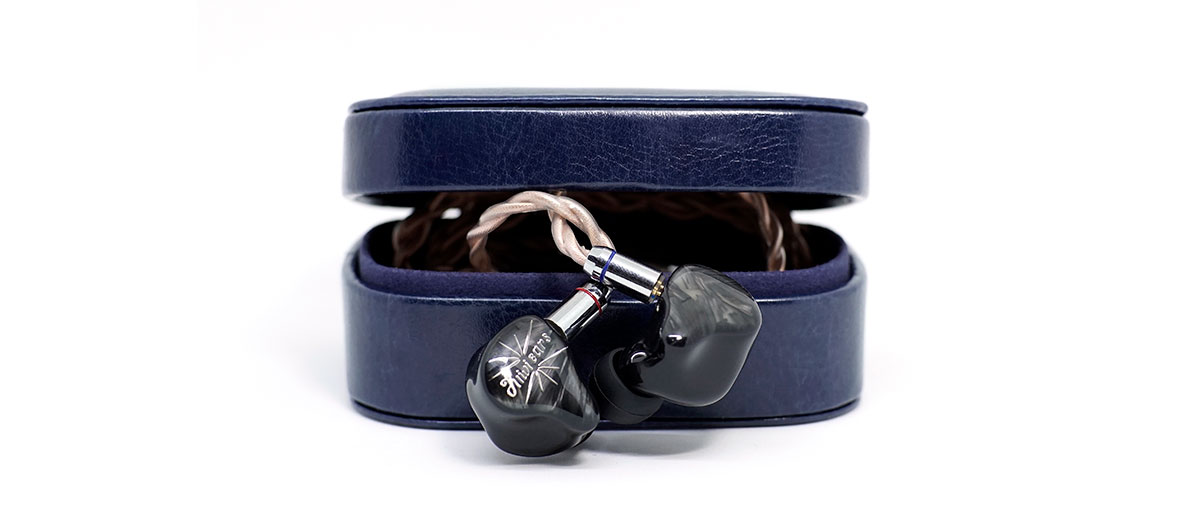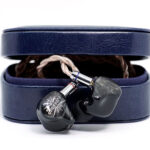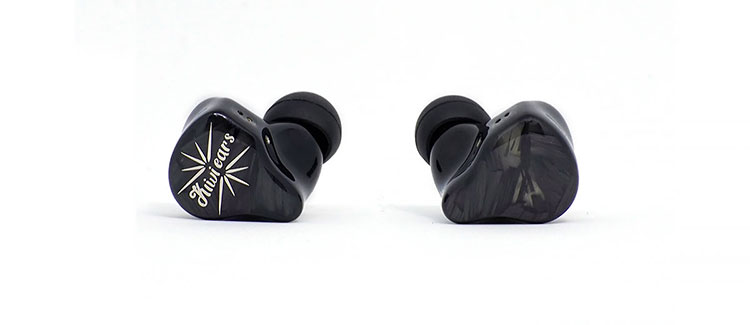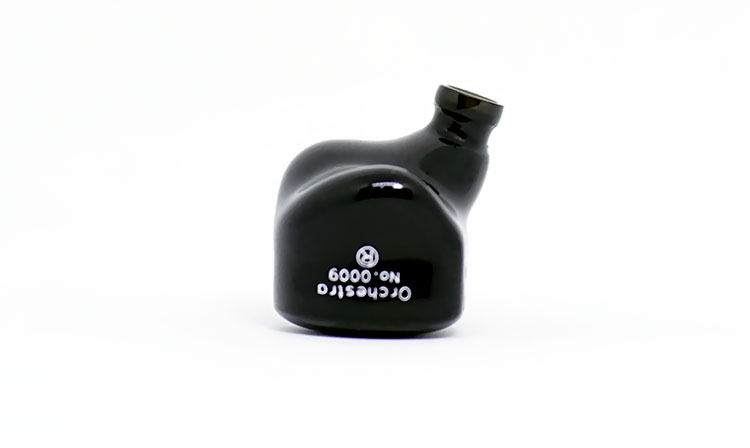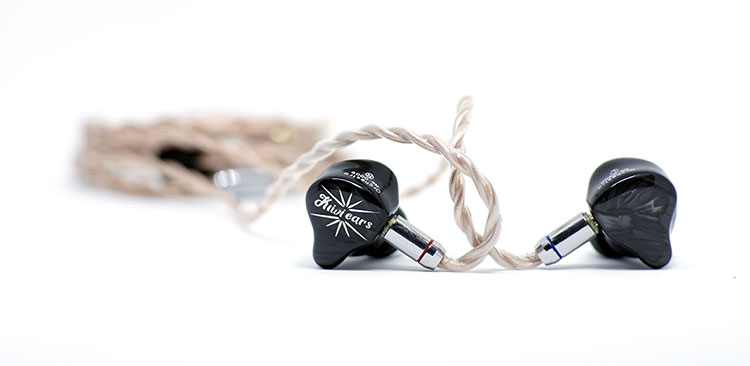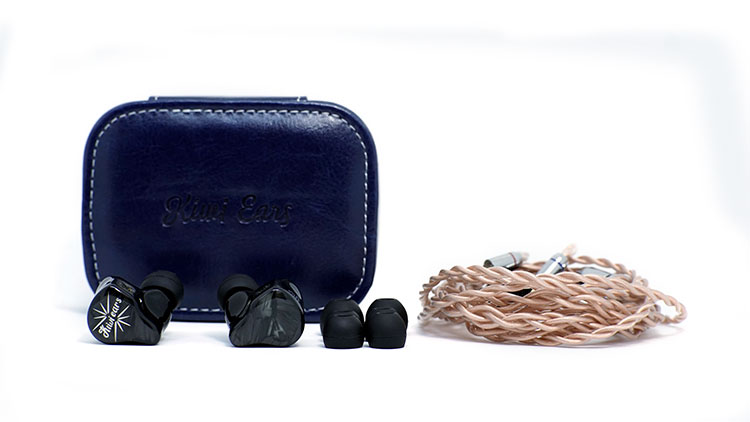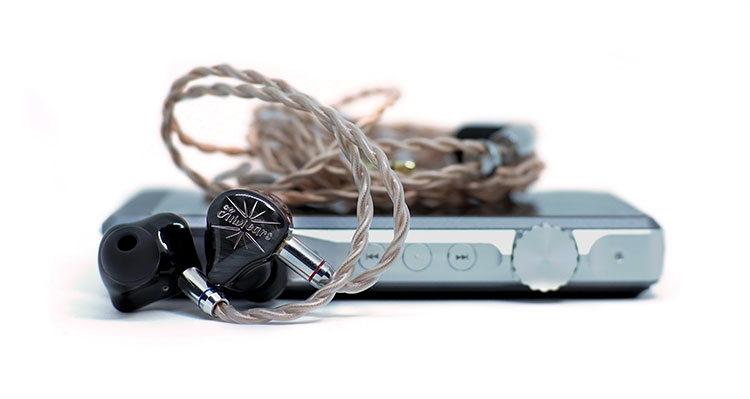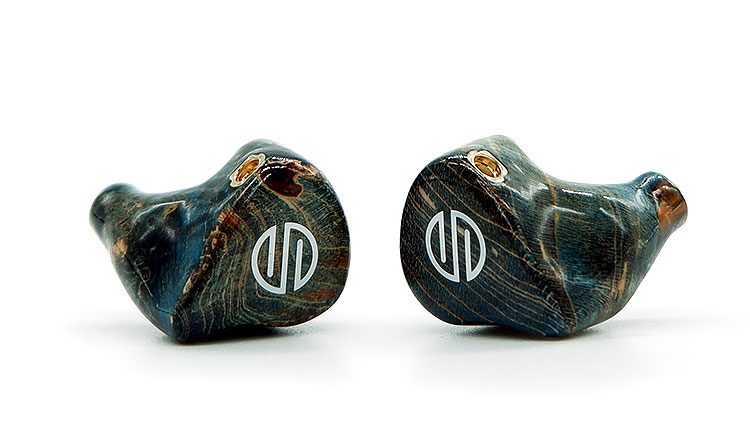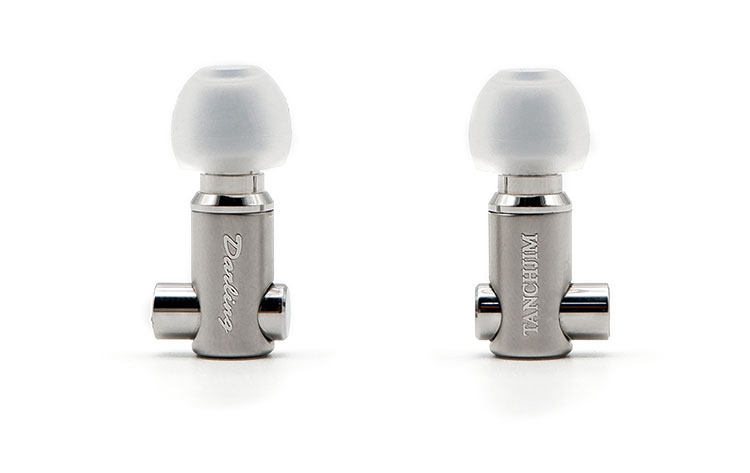Kiwi Ears Orchestra is an 8 balanced armature universal in-ear monitor and the flagship IEM in the company’s line-up. It is priced at $499.
Disclaimer: The Kiwi Ears Orchestra sent to us is a sample in exchange for our honest opinion in this review. We thank the team at Linsoul for giving us this opportunity.
To read more about Linsoul reviews previously done on Headfonics please click here.
Note, this review follows our new scoring guidelines for 2020 which you can read up on here.
Kiwi Ears Orchestra is a recent flagship IEM by Kiwi Ears, a relatively new player in the audiophile earphone market. Little is known about the company, although, it’s said to be a brand of a veteran unnamed designer that has tuned some of the most popular ChiFi IEMs.
Featuring an 8 balanced armature driver design, the Orchestra is positioned to compete in the midrange of the audiophile market. It currently costs $499, which fits in the stereotypical mid-fi category for portable audio.
Targeting musicians and studio engineers in mind, Kiwi Ears focused on balanced-tuning, trying to make it an ‘all performance’ monitor.
Tech Highlights
Balanced armature drivers have been widely used in IEMs because of their smallness in size and the ability to produce articulate details. However, BAs are known to have thin timbre and bass. With the 8-BA Orchestra design, Kiwi Ears aims to address these issues through their unique tuning and customization of their in-house Balanced Armature drivers.
For the bass, they have used 2 of the newest full-size Sonion dual subwoofer BA drivers which try to amplify the lows. Two Knowles ultra-high frequency BA drivers were also used to ensure extended treble, bringing out detail and air.
A unique offering from the Orchestras is its custom mid-frequency drivers that aim to give a natural timbre in the midrange region. The Orchestra also features a 3-way comprehensive passive crossover system, which ensures the smooth transition across various frequencies.
Design
Upfront, the shell is a simple smooth black panel with a paint-brush-like textured design. The right panel has the simple brand logo of Kiwi Ears while the other panel is left plain.
What’s surprising is the unique 3D-fluorescent shell that changes its color to a blue-black combination when it absorbs UV light, which really elevates the look. It also gives character to the IEM, which frankly is something I look for, especially in IEMs.
A molded shell for an ergonomic fit is also evident, observing how it’s curved across all dimensions. It’s nothing out of the ordinary, but nevertheless, very professionally finished.
Comfort & Isolation
Wearing the Kiwi Ears Orchestra is comfortable even in long periods, despite the weight of the cable and drivers combined. It fits perfectly in the ears, thanks to the ergonomic contouring on the shell design.
Material of the stock tips was nothing out of the ordinary, each pair was a black dome-shaped single flanged ear tips. They do, however, provide excellent isolation.
While wearing the Orchestras, outside noise is totally blocked out, making it easy to hear minute details in various tracks. With eyes closed, it is easy to immerse yourself into the track you’re listening to, with no distractions, unless of course someone shouts directly or physically nudges you.
Stock Cable
Kiwi Ears definitely did not skimp on the cable. They have created their custom high-quality cable to complement Orchestra’s neutral tuning. It’s made up of 4 core ultra-pure grade oxygen-free copper which offers excellent conductivity for clean sound transmission.
From the outside, it’s a 1.2 m four braided core laminated cable with a dull-orange tint that compliments Orchestra’s shell. It is terminated with a gold 2-pin 0.78mm and has a 3.5mm gold plug.
Stock cables add a noticeable weight when moving around. However, the effect on microphonics was subtle and was not bothersome. The wire sits comfortably at the back of the ears, with good memory retention, which adds a layer of secureness.
Packaging & Accessories
Packaging is a simple minimalist matte black square box with the Kiwi Ears logo printed in the center. Upon removing the cover and the boxed manual, the shiny shell of the Orchestra is highlighted with the matte black interior.
Similar to the cover, the Kiwi Ears logo is also seen outside the box wherein the cables and 3 extra pairs of ear tips – 1 pair each of Small, Medium, Large are enclosed.
Furthermore, a premium blue leather hard carrying case with the same logo is located inside the box. The carrying case can be opened with minimal magnetic resistance, wherein a small mesh pouch and a velvet blue felt-like material are found inside.
Sound Impressions
Bass
Bass is definitely not the primary focus of the Kiwi Ears Orchestra, and that’s not a bad thing. To be frank, sub-bass is recessed in this pair. It lacks the thump that is commonly looked for in IEMs. The mid-bass is also very lean, although it is slightly amplified with bass-heavy tracks.
Despite the lack of bass, it has a natural bass response. It is tight, with a fast and natural attack and decay response. This is emphasized on fast bass tracks, where the notes are distinguishable with space between pluck or thwack at the beginning. Successive notes are distinct and do not bleed into each other.
The Orchestra may have recessed lows but it greatly complements the overall sound profile of the IEM.
Midrange
The midrange region is definitely the strength of the Orchestra. Extended listening helps to appreciate the tuning of the Orchestra as more details are heard, which are often overlooked upon initial impressions. They are a bit forward but tuned very well to present a rich midrange region.
The midrange is mostly even, with a pleasing balance between the lower and upper midrange. Instruments sound natural with the Orchestra, with the guitar strings and wind instruments performing exceptionally well. The acoustic guitar sounds clean and crisps, every strum, and pluck stood out, complimenting the good vocals in acoustic songs.
Vocals shine in these IEMs. It is articulate, clear, transparent, and lush. Warmth is felt while listening to velvety vocals of both male and female artists. Details such as vocal layering and vocal tonality, to name a few, also stands out, especially with overlapping vocals of multiple artists, which are otherwise veiled in other IEMs.
Treble
Orchestra has a good treble tuning. It is well-balanced, neither too bright nor too dark. The treble response sits beside the midrange, with its tuning complementary to both the bass and midrange of the Orchestra.
Treble also extends well in the Orchestras. It is capable of reaching extended frequencies as sparkle and air are easily noticeable. Cymbals are splashy and have an extended shimmer, which just adds sweetness to the overall pleasant tuning of the Orchestras.
What stood out in the treble region is the good control and clarity of the highs. It appears to be smooth and consistent throughout the higher frequencies. It sounds natural, with no feeling of over-boosting in the highs. There were no sibilance and harshness felt across different genre which makes forgiving and easy to listen to longer periods.
Soundstage
Staging on the Orchestras is above average, but not exceptional. It is spacious enough to have a distinction of the position of the different instruments and vocals.
Imaging, however, is accurate in these IEMs. There is a noticeable distinct gap between instruments in the same frequency range coming in at different directions. With the above-average layering and multi-directional sound reproduction, it sure is impressive.
Synergy
Efficiency
With an impedance of 17Ω and a sensitivity of 111db, the Orchestra is not difficult to drive. With only a 25% volume level with the iPhone 12 Pro Max, the Orchestra is already at a good listening range.
Moving on to a dedicated audio player, the Orchestra can easily be powered with low gain at the 45% volume levels with the ibasso DX150. There was also no unwanted noise observed.
Pairings
With the Orchestra having a naturally balanced tonality with recessed bass, it is quite flexible with various DAP sound signatures to suit one’s preference. However, to balance the lean lows, it would be best to pair a dark or warm DAP to boost its mid and sub-bass region.
The ibasso DX150 (AMP6) is known to have a natural sound signature with a warm tonality. Pairing it with the Orchestra still produced lean bass, although, it complemented its midrange tuning which produced warm and rich vocals and instrumentals.
Nevertheless, pairing the Ibasso DX150 with the Orchestra still gave a good overall tonality which complimented detail-oriented tracks and produced a good sound stage and above-average imaging.
Select Comparisons
BGVP DM8
$349
Technical
The BGVP DM8 is an 8 balanced armature flagship universal IEM, with 2 Sonion drivers for the low frequencies, 1 Sonion driver and 1 Knowles driver for the mid-range, 2 Knowles drivers for the Treble, and 2 more Knowles drivers for the higher frequencies.
Even though both IEMs have 8 balanced armatures inside, the Orchestra’s 8 BA has a different configuration – 2 Sonion drivers for the low frequencies, 4 custom BA drivers for the midrange, and 2 Knowles drivers for the higher frequencies.
With the significant differences in the BA driver configurations, it is expected that the DM8 and Orchestra will vary differently in sound signature.
Design
The stabilized wood design on the BGVP DM8 sure looks stunning compared to the glossy textured design of the Orchestras. But this comes down to personal preference, the green-blue colored wood might be too tacky whereas the Kiwi Orchestras might look too plain and neutral for others.
Apart from the difference in colors, both IEMs have a similar feel, both have a glossy finish with an ergonomic shape shell form factor that enhances comfort for the users.
Both IEMs also have an ear-hook design with the Orchestra having a universal 0.78mm 2 pin termination while the DM8 having an MMCX termination.
The DM8s offer a 2.5mm plug with 2 adaptors – a balanced 2.5mm to single-ended 3.5mm and a 2.5mm to 4.4mm balanced connection, which makes it flexible to use across different players. Unfortunately, the Orchestras only come in with the common 3.5mm plug.
Performance
Having said that bass is not the focus of the Orchestra, one would expect the DM8s to have a clear advantage in the lows. DM8s do offer more elevated bass compared to the Orchestras, but it still felt lacking and not far off with Orchestra’s tuning. Both IEMs do feel to have rolled-off bass, with the DM8s only performing slightly better.
The midrange of the BGVP DM8 pales in comparison with the Kiwi Ears Orchestra. DM8s have a slightly recessed lower midrange which made the male vocals seem a bit dull in comparison with the Orchestra.
In fact, with both IEMs having a BA driver, the Orchestra did exceptionally well in creating a good timbre. The texture on the wind instruments is noticeably different – with the Orchestra producing the trumpet and flute sound thicker and accurate.
More shimmer and brightness are felt on the DM8s compared with the Orchestra. Both IEMs have a good treble extension, however, DM8s have the upper hand in this region. Cymbals are more splashy, although the tuning of the Orchestra is adequate to feel the presence and brilliance in the upper regions.
The sound stage is wider on the Orchestra. It is apparent especially with tracks with multiple vocal layering, with the Orchestras sounding more natural and separate. Imaging on both IEMs does have above-average layering.
Tanchjim Darling
$419.99
Technical
The Tanchjim Darling is a Tanchjim’s recently released flagship IEM. It features a triple hybrid universal IEM, composed of 1 dynamic driver with DMT (dual magnetic technology), and 2 Sonion BA drivers in contrast to the Orchestra’s all-BA 8 driver design.
Design
The Darling has a traditional straight-down design with an MMCX termination. The slim copper wire cable with silver foil complements the stainless-steel body of the Darling, making it look elegant and sophisticated.
The Orchestra, however, follows a more common IEM design with an ergonomic shell with an ear-hook design, terminated with a universal 0.78mm 2-pin termination.
Looks aside, the Darlings are more comfortable and easier to carry around, due to the slim design and lightweight cables.
However, the fit of the Orchestra is better and far more secure. Thanks to the ergonomic fit of the shell, wearing them is seamless and offers better sound isolation compared to the Darling.
Performance
Because the Darlings features a dynamic driver, it was expected to have significantly deeper sub-bass and a more detailed mid-bass compared to the Orchestra. However, the Darling has a thinner presentation of the mid-bass, even though the Orchestra’s presentation of the lows is already on the lean side.
Orchestra outperforms the Darlings in the midrange region. Darling’s take on male and female vocals is very lean, compared to the Orchestra’s. Orchestra also has a more balanced lower midrange and higher midrange – male and female vocals coexist, compared to Darling’s upper midrange uptick.
Wind instruments such as trumpet and flute are more articulate and have a more natural texture on the Orchestra. The midrange region shines on the Orchestra, the difference between the two is night and day.
Darling has the more elevated treble of the two monitors. Although both IEMs have good treble extensions, the cymbals are splashier and the vocals sound airier in the Darlings. The Orchestra, however, are tuned to be more forgiving and balanced as treble upticks tend to be fatiguing over time.
Both have above-average imaging, instruments are natural and crisp, but the Orchestra sounds more accurate than the Darlings. The sound stage is very similar in-depth, spacious with adequate instrument separation.
Our Verdict
Despite Kiwi Ears being relatively new on the market, the Orchestra stood out among the compared tri-hybrid and multiple BA drivers in the sub $500 price range.
The price point positions it a bit above casual budget buyers and the competition is pretty fierce. Bass heads will definitely find the controlled low-end not to their liking.
However, with its balanced-tuning, excellent midrange performance, spacious soundstage, and above-average imaging, it is evident how Kiwi Ears have musicians and studio engineers in their crosshairs and not just audiophiles in mind.
Kiwi Ears Orchestra Technical Specifications
- Sensitivity 111dB
- Frequency Range 20Hz-20KHz
- Impedance 17Ω
- Drivers Config Hi 31736*2; Mid: Customised BA* 4 Low: 3800*2
- Noise Isolation 26dB
- Earphone Jack 78mm 2-Pin
- Plug 5mm
- Cable 4 Cores Ultra-Pure Oxygen-Free Copper in 1.2M

